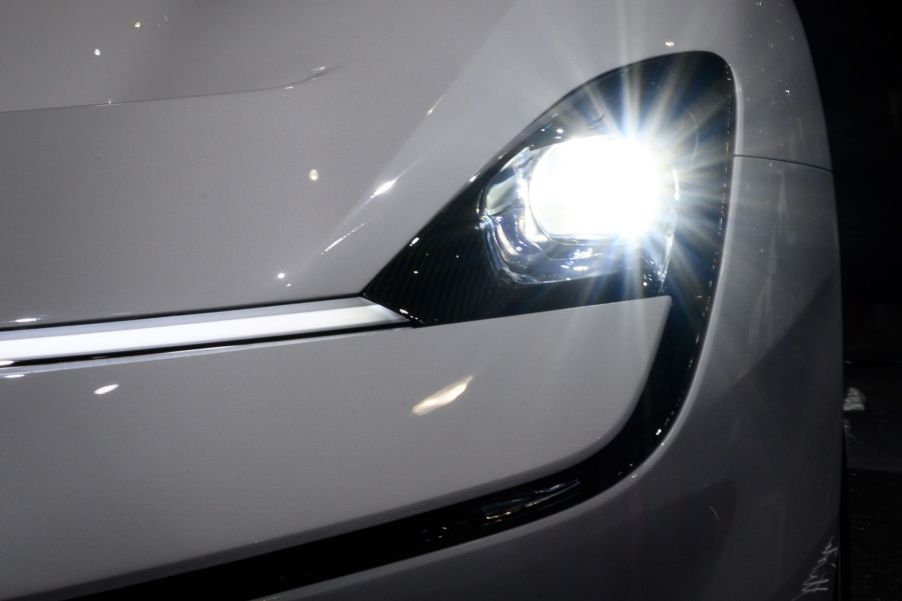
What Are Daytime Running Lights and Why Do Modern Cars Have Them?
Despite driving them daily, many drivers don’t know much about some of their vehicles’ most basic components. And because they don’t, some drivers don’t know how to use them properly or why proper use is important. Take something as simple as headlights, for instance, whose importance should be self-evident. And then keep an eye out the following evening you’re driving for just how many cars don’t have their lights on.
Many drivers are also unfamiliar with daytime running lights, which aren’t standard equipment in the U.S. But with more automakers adding them, it’s an important safety feature drivers should know about.
Why following road rules regarding lights is critical

Of course, ensuring your lights are on at night is essential to avoiding accidents. When they’re off, you can’t see as well, and neither can other drivers. But often, drivers have different ideas of what constitutes night. In the summer, when the sun is out longer, it’s not uncommon for drivers to have their lights off at dusk as long as they can still see. But lights also help alert pedestrians that a car is coming and can help them stop themselves from darting into the street, resulting in an accident.
Driving without headlights is also grounds for a ticket under certain circumstances. All 50 states have different rules for when headlights should be displayed. It’s easier to make sure they’re on after sunset than to memorize them all. You could quickly be slapped with a summary offense and a small fine if you don’t use your automatic headlights feature. That’s what it’s there for.
Many drivers also fail to use their high beams at appropriate times, arrogantly assuming they don’t need them during inclement weather periods. Simple errors like these have contributed to or caused many a crash. The National Highway Transportation Safety Administration (NHTSA) estimates that 94 to 96 percent of all accidents are preventable. So it’s vital that you follow the rules and recommendations regarding your lights to reduce your risk.
Following the rules starts with understanding more about how your car functions. One element you may not be familiar with is daytime running lights. Here’s what you need to know about this often-overlooked element.
What are daytime running lights?
Accordign to Erie Insurance, daytime running lights, also known as daytime running lamps, are lights that automatically turn on as soon as you start your engine. Some drivers may confuse them with headlights. But the two aren’t the same. Headlights are designed for you to be able to see your surroundings better. But daytime running lights are designed for other drivers to see you better.
Typically, daytime running lights are designed with LED lights rather than halogen light bulbs that power your headlights. Since daytime running lights must be on every time your engine is on, they must be long-lasting. LED lights last even longer than halogen ones.
According to Headlights.com, daytime running lights first became mandatory additions to vehicles in Sweden in the Seventies. They were quickly adopted by Northern European countries lacking much visible winter daylight.
As per Kelley Blue Book, the European Union made them mandatory on any new vehicle produced in 2012 or later. While these lights also became standard in Canada in 1990, they are not required in the United States. General Motors actually petitioned the NHTSA to require them, but the petition was rejected. As they are not standard, they aren’t considered part of state motor vehicle codes or related penalties.
Why it would be good if daytime running lights were standard in the U.S.
Daytime running lights can help reduce accidents, especially in low ambient daylight. Not only can they be helpful during winter months, but consider heavily wooded areas filled with curvy back roads or winding stretches of a highway during inclement weather. Having them on can help another driver identify yours and maneuver as necessary to avoid a potential collision.
Some automakers also appreciate the opportunity that daytime running lights provide to brand their vehicle further. Daytime running lights can easily be marketed as a car brand’s “signature lights,” as an added enticement, or a premium trim feature.
Daytime running lights can also be added to vehicles without them as an aftermarket modification. There are kits on the market, but it is much better to have a professional install them if you don’t have an automotive background.
Given that these lights are still largely unknown among a vast swath of drivers, you may find difficulty finding an auto shop that specializes in installing them. But even if you have to pay a bit of a premium to get daytime running lights installed, you’ll likely pay less and deal with less aggravation than you would if you’re in a car crash.


